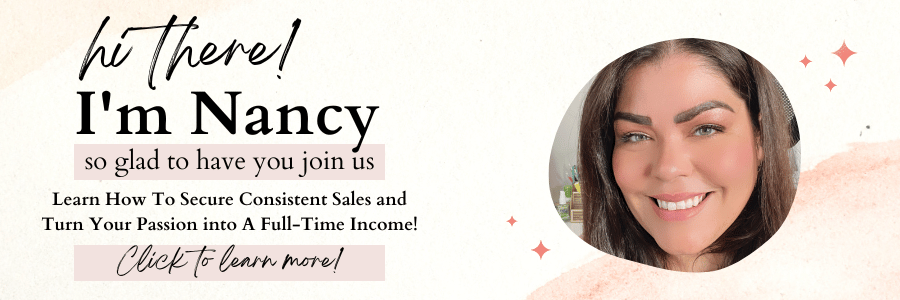Home > Etsy > How much does it really cost to sell on Etsy
DISCLOSURE: This is a sponsored post. Through my links, I may receive a commission if you decide to make purchases at no cost for yourself! Check out our disclaimer for more info on how it works.
Are you looking to start a new Etsy shop and wondering about the cost of selling on Etsy?
As an online marketplace for handmade and vintage items, Etsy charges a fee for every sale made on the platform.
These Etsy fees are an important factor to consider when calculating your profits and determining your pricing strategy.
In this blog post, we’ll explore the different fees that Etsy charge, including Etsy seller fees and the fee for selling on Etsy, and provide a breakdown of how much it can cost to sell on the platform, what Etsy takes from each sale, and share some tips to offset the fees.
So if you’re interested in selling on Etsy and want to know the actual cost, keep reading!
What Types Of Fees Does Etsy Charge?
When it comes to selling on Etsy, there are a few different fees to keep in mind. One of the fees that sellers may encounter is the listing fee. This is a fee that Etsy charges each time a seller creates a new listing for an item. Etsy charges a flat fee currently of $0.20, regardless of how much the item is listed for.
It’s important to note, however, that this fee is charged per item listed, not per sale made. So if you have multiple quantities of the same item listed, you’ll only be charged the listing fee once.
Transaction fees
Etsy charges a transaction fee to sellers for every item they sell on the platform. Etsy chargers 6.5% transaction fee of the item’s total price, which includes the cost of the item, any shipping charges, and gift wrapping.
This fee is charged to the seller and deducted from the total amount of the sale before the seller receives their payout.
Let’s say a seller listed a handmade purse on Etsy for $50 and offered free shipping. The buyer purchases the item and pays the full $50, which includes the shipping cost. The seller would then be charged a transaction fee of 6.5% of the total price, which is $3.25 ($50 x 6.5% = $3.25).
This fee is deducted from the total sale amount, so the seller would receive a payout of $46.75 ($50 – $3.25 = $46.75).

Payment Processing Fee
Etsy Payment is Etsy’s payment processing system that allows sellers to accept payments from customers through various payment methods, including credit card, debit card, Apple Pay, bank transfers, and Etsy gift cards.
This system is the primary payment option used by most Etsy sellers, as it offers a streamlined checkout process for customers and simplifies the payment process for sellers.
When a seller uses Etsy Payment, they are charged a payment processing fee, which is deducted from the total amount of the sale before the seller receives their payout. The current payment processing fee for Etsy Payment is 3% of the total item price, plus a $0.25 transaction fee.
For example, if a seller sells an item for $50 using Etsy Payment, the payment processing fee would be $1.75 ($50 x 3% = $1.50 + $0.25 = $1.75), and the seller would receive a payout of $48.25 ($50 – $1.75 = $48.25).
It’s worth noting that if a seller uses a payment method other than Etsy Payment, such as PayPal, they will not be charged the Etsy Payment processing fee, but they may still be charged other fees by the payment processor. Additionally, if a seller offers free shipping on an item, the payment processing fee is calculated based on the total sale price, including the cost of shipping.
Overall, Etsy Payment offers a convenient and secure payment processing option for Etsy sellers, but it’s important to keep in mind the associated fees when setting prices and calculating profits.
Subscription Fee
Etsy Plus is a monthly subscription package offered by Etsy to sellers on the platform. For a fee of $10 per month, Etsy Plus provides sellers with a range of tools and features to help them improve their sales and grow their businesses.
Here are some of the benefits and cons of using Etsy Plus.
Benefits:
- Customizable shop homepage: With Etsy Plus, sellers can customize the look and feel of their shop homepage, including the ability to add a cover photo and a featured section showcasing their top products.
- Listing and advertising credits: Etsy Plus subscribers receive 15 monthly credits for promoting their listings on Etsy and $5 in credit to use towards Etsy Ads, which can help increase visibility and drive more traffic to their shop.
- Access to exclusive tools: Etsy Plus provides sellers with access to a range of exclusive tools, including advanced shop analytics, custom web address, and a discount manager tool that allows sellers to create sales and promotions easily.
- Restock request for sold out items: This can help increase Etsy sales.
Cons:
- Additional cost: The primary drawback of Etsy Plus is that it requires an additional monthly fee of $10, which can add up over time if you’re not making enough sales to justify the expense.
- Not necessary for all sellers: While Etsy Plus offers a range of useful features, not all sellers may need or use all of them. Depending on your specific business needs and goals, you may be better off using the free tools and features provided by Etsy.
- Limited impact on sales: While Etsy Plus can help sellers improve their shop’s appearance and promote their listings, it’s not a guaranteed way to increase sales. Ultimately, the success of your Etsy shop will depend on a range of factors, including the quality of your products, pricing, and marketing efforts.
In summary, Etsy Plus can be a helpful tool for some Etsy sellers, especially those who are looking to improve the appearance of their shop and increase visibility. However, it’s important to weigh the costs and benefits before signing up to determine whether it’s the right choice for your business.

Example of retractable Etsy plus shop banner

Example of featured listing of an Etsy plus shop
Fees for In-Person Sales on Etsy
Etsy offers in-person selling through Square, which is a point-of-sale system that allows sellers to accept payments from customers in person, such as at craft fairs or other events. Here’s how it works and the associated fees:
To use Square for in-person selling on Etsy, sellers need to sign up for a Square account and link it to their Etsy shop. Once the account is set up, sellers can use the Square Reader, a small card reader that plugs into a mobile device, to accept credit card and debit card payments from customers.
When a seller makes an in-person sale using Square, they are charged a transaction fee of 2.6% of the sale amount, plus a $0.10 fee per transaction. This fee is automatically deducted from the seller’s Square account at the time of the sale.
In addition to the transaction fee, Square also offers optional additional services for a fee, such as inventory management, invoicing, and payroll processing. These additional fees can vary depending on the service and the seller’s needs.
One important thing to note is that when a seller makes an in-person sale using Square, the sale is not processed through Etsy Payment, which means the seller does not pay the 3% payment processing fee that they would typically pay for an online sale on Etsy. However, sellers using Square will still not be charged the 6.5% transaction fee that Etsy charges on the total price.
Overall, using Square for in-person selling on Etsy can be a convenient option for sellers who participate in craft fairs or other events, and it can help them expand their reach beyond the online marketplace. However, it’s important to consider the associated fees and weigh them against the potential benefits before deciding whether to use this option.your business.

Pattern fee
Pattern is a website builder that allows Etsy sellers to create a standalone e-commerce store for their products, separate from their Etsy shop. Here’s what you need to know about Pattern and the associated costs and fees:
Cost:
The cost of Pattern is $15 per month, in addition to the fees you already pay for your Etsy shop.
Fees:
In addition to Pattern’s monthly cost, transaction fees are associated with each sale made through the platform. These fees are as follows:
- For transactions processed through Etsy Payment, you’ll pay the standard 3% payment processing fee that you would pay for an online sale on Etsy, as well as the 6.5% transaction fee that Etsy charges on the total price, which includes the cost of the item and any shipping charges.
- For transactions processed through PayPal, you’ll pay the standard PayPal fees, which can vary depending on the transaction amount and the seller’s location.
Benefits:
- Professional-looking storefront: With Pattern, you can create a professional-looking storefront that showcases your brand and products in a way that’s separate from your Etsy shop.
- Custom domain name: You can use your own custom domain name for your Pattern site, which can help with branding and make it easier for customers to find your store online.
- Advanced customization options: Pattern offers more advanced customization options than Etsy does, such as the ability to create custom pages and add features like a blog or newsletter sign-up form.
- Expanded reach: By having a standalone e-commerce store, you can potentially reach new customers who aren’t on Etsy and build a larger customer base.
Overall, Pattern can be a good option for Etsy sellers who want to expand their reach and have more control over the look and feel of their online storefront.
However, it’s important to consider the associated costs and fees before deciding whether to use this option.
Currency Conversion Fee
Etsy charges a currency conversion fee when a seller makes a sale in a currency other than their shop currency. Here’s what you need to know:
When a seller makes a sale in a currency other than their shop currency, Etsy will convert the sale amount into the seller’s shop currency at the current exchange rate. Etsy charges a fee for this currency conversion, which is 2.5% of the sale amount.
For example, let’s say a seller’s shop currency is USD, but they make a sale to a customer in Canada for CAD 100. The current exchange rate is 1 CAD = 0.8 USD, so the sale amount would be converted to USD 80. Etsy would then charge the seller a currency conversion fee of 2.5% of USD 80, which is USD 2.
It’s important to note that this fee is in addition to any other fees associated with the sale, such as the transaction fee and payment processing fee. The currency conversion fee is automatically deducted from the seller’s account at the time of the sale.
Sellers can reduce the frequency of currency conversion fees by setting their shop currency to match the currency of their primary market. For example, if a seller primarily sells to customers in the UK, they may want to set their shop currency to GBP to avoid currency conversion fees for UK sales.
Overall, the currency conversion fee is a small but important aspect of selling on Etsy, especially for sellers who make sales in multiple currencies. It’s important to factor this fee into your pricing and consider how it may impact your profit margins.
Etsy Ads
Etsy offers two types of advertising options for sellers: onsite ads and offsite ads. Here’s what you need to know:
Onsite Ads:
Onsite ads are ads that appear on Etsy’s website and are targeted to Etsy users based on their search queries and browsing behavior. These ads can appear in various places on the Etsy site, such as in search results, on product pages, or in the Etsy app. Sellers can create and manage their own onsite ads through the Etsy Ads dashboard since they are optional.
Cost and Fees:
Onsite ads are priced on a cost-per-click (CPC) basis, meaning that sellers only pay when someone clicks on their ad. Sellers can set their own maximum bid for each click, and Etsy will automatically adjust the bid based on competition and ad performance. The minimum bid is $0.01 per click, and sellers can set a daily budget to control their overall spend on ads.
Etsy charges a fee for onsite ads, which is currently 15% of the total ad spend. For example, if a seller spends $100 on onsite ads, they would be charged a fee of $15.
Offsite Ads:
Offsite ads are ads that appear on external websites and platforms, such as Google or Facebook, and are targeted to potential customers who have shown an interest in similar products on Etsy. These ads are automatically created and managed by Etsy, and sellers can opt-in or opt-out of the program.
Cost and Fees:
Offsite ads are also priced on a cost-per-click (CPC) basis, and sellers only pay when someone clicks on their ad. However, the CPC rate is determined by Etsy and is based on a percentage of the sale price, ranging from 12% to 15% depending on the seller’s sales volume. Sellers are only charged for offsite ads if the customer makes a purchase within 30 days of clicking on the ad.
Examples:
An example of an onsite ad might be a promoted listing that appears at the top of search results for a particular keyword. A seller could create an ad for their handmade pottery, and set a maximum bid of $0.50 per click. If a user clicks on the ad and visits the seller’s shop but doesn’t make a purchase, the seller wouldn’t be charged.
An example of an offsite ad might be a Facebook ad that appears in the newsfeed of a user who has previously shown an interest in handmade jewelry. If the user clicks on the ad and makes a purchase within 30 days, the seller would be charged the agreed-upon percentage of the sale price.
What Percentage Does Etsy Take?
Etsy fees takes a percentage of each sale made on the platform. Here’s what you need to know:
Transaction Fee:
The transaction fee is Etsy’s main fee and is currently set at 6.5% of the item’s total price, which includes the cost of the item and any shipping charges. For example, if a seller sells a handmade mug for $20 with $5 shipping, the total sale price is $25. Etsy’s transaction fee for this sale would be $1.5 (6.5% of $25).
Listing Fee:
Sellers are also charged a listing fee of $0.20 for each item listed on the site. This fee is charged regardless of whether the item sells, and the listing lasts for four months. For example, if a seller lists 100 items on Etsy, they would be charged a total of $20 in listing fees.
Payment Processing Fee:
Most Etsy sellers use Etsy Payment, which is Etsy’s own payment processing system, to receive money from customers. The payment processing fee is currently 3% plus $0.25 per transaction. For example, if a seller sells a handmade necklace for $50, the payment processing fee would be $1.75 (3% of $50 + $0.25).
Currency Conversion Fee:
Etsy also charges a currency conversion fee of 2.5% of the sale amount when a seller makes a sale in a currency other than their shop currency. For example, if a seller’s shop currency is USD, but they make a sale to a customer in Canada for CAD 100, Etsy would convert the sale amount to USD and charge the seller a currency conversion fee of 2.5% of the converted amount.
Examples:
Let’s say a seller sells a handmade quilt for $200 with $10 shipping, and the buyer pays with a credit card using Etsy Payment. Here’s how the fees would break down:
- Transaction fee: $10.50 (6.5% of $210)
- Listing fee: $0.20
- Payment processing fee: $6.25 (3% of $210 + $0.25)
- Total fees: $16.95
If the same seller made a sale to a customer in the UK for £150, and the seller’s shop currency is USD, here’s how the fees would break down:
- Sale amount: USD 208.50 (based on an exchange rate of 1 GBP = 1.39 USD)
- Currency conversion fee: $5.21 (2.5% of USD 208.50)
- Total fees: $22.36 (including transaction, listing, and payment processing fees)
Some Methods Of Offset Etsy Fees
Increase prices
One common way for Etsy sellers to offset the fees they are charged is to increase their prices slightly. By increasing their prices, sellers can make up for the fees they are charged without significantly impacting the price their customers pay. Here’s an example:
Let’s say a seller wants to sell a handmade bracelet for $20, but they know that they will be charged a 6.5% transaction fee and a 3% payment processing fee if they use Etsy Payment. In order to make up for these fees, the seller could increase the price of the bracelet to $23.13.
Here’s how that price is calculated:
- Base price of bracelet: $20
- 6.5% transaction fee: $1.30 (6.5% of $20)
- 3% payment processing fee: $0.60 (3% of $20 + $0.25)
- Total fees: $1.90
- Price with fees added: $21.90
- Rounded up to nearest $0.25: $22.00
- Adding a little bit more for safety margin: $23.43
By charging $23.43 instead of $20, the seller will be able to make up for the fees they are charged without significantly impacting the price their customers pay. However, it’s important for sellers to be careful when increasing their prices, as charging too much could turn customers away.
Other methods of offsetting Etsy fees include offering free shipping with the cost of shipping built into the item price, negotiating better rates with shipping carriers, and reducing expenses associated with production and materials.
Here are some additional ways for Etsy sellers to offset the fees they are charged:
- Offer bundle deals: Offering bundle deals where customers can purchase multiple items at a discounted rate can be a great way to increase sales and offset fees. By bundling items together, sellers can still make a profit while offering customers a discount.
- Utilize social media: Using social media platforms to promote your Etsy shop and products can help drive traffic to your store and increase sales, reducing the impact of Etsy fees.
- Sell in bulk: Selling items in bulk to wholesale buyers or retailers can be a great way to offset Etsy fees. Wholesale buyers are often willing to pay a discounted rate for bulk purchases, allowing sellers to make up for fees while still turning a profit.
- Sell digital products: Selling digital products like printables or digital downloads can be a great way to offset fees since there are no shipping costs associated with these items. Digital products can also be created once and sold multiple times, making them a great way to generate passive income.
- Use alternative payment methods: While Etsy Payments is the most popular payment method on Etsy, sellers can also offer alternative payment methods like PayPal or Square. These payment methods may have lower fees associated with them, which can help offset Etsy fees.
It’s important to remember that while offsetting fees is important, sellers should also focus on providing high-quality products and excellent customer service to maintain and grow their customer base.
In Conclusion
In conclusion, selling on Etsy can be a great way for creative entrepreneurs to turn their passion into a profitable business. However, it’s important to be aware of the various costs associated with selling on the platform in order to maximize profits and ensure that your business is sustainable in the long term.
Some of the costs associated with selling on Etsy include transaction fees, payment processing fees, and advertising fees. Additionally, there are optional fees like Etsy Plus and Pattern that sellers can choose to utilize.
While these fees can add up, there are a variety of ways that Etsy sellers can offset them, such as increasing prices slightly, offering bundle deals, and utilizing social media to drive traffic to their stores. By being strategic and mindful of costs, Etsy sellers can build successful businesses on the platform.
Ultimately how much does it really cost to sell on Etsy will depend on the individual seller and their unique business needs. By carefully considering the various fees and costs associated with selling on Etsy and exploring ways to offset them, sellers can make the most of the platform and build thriving businesses.
Have questions or concerns? Please feel free to drop your questions below!


+ show Comments
- Hide Comments
add a comment